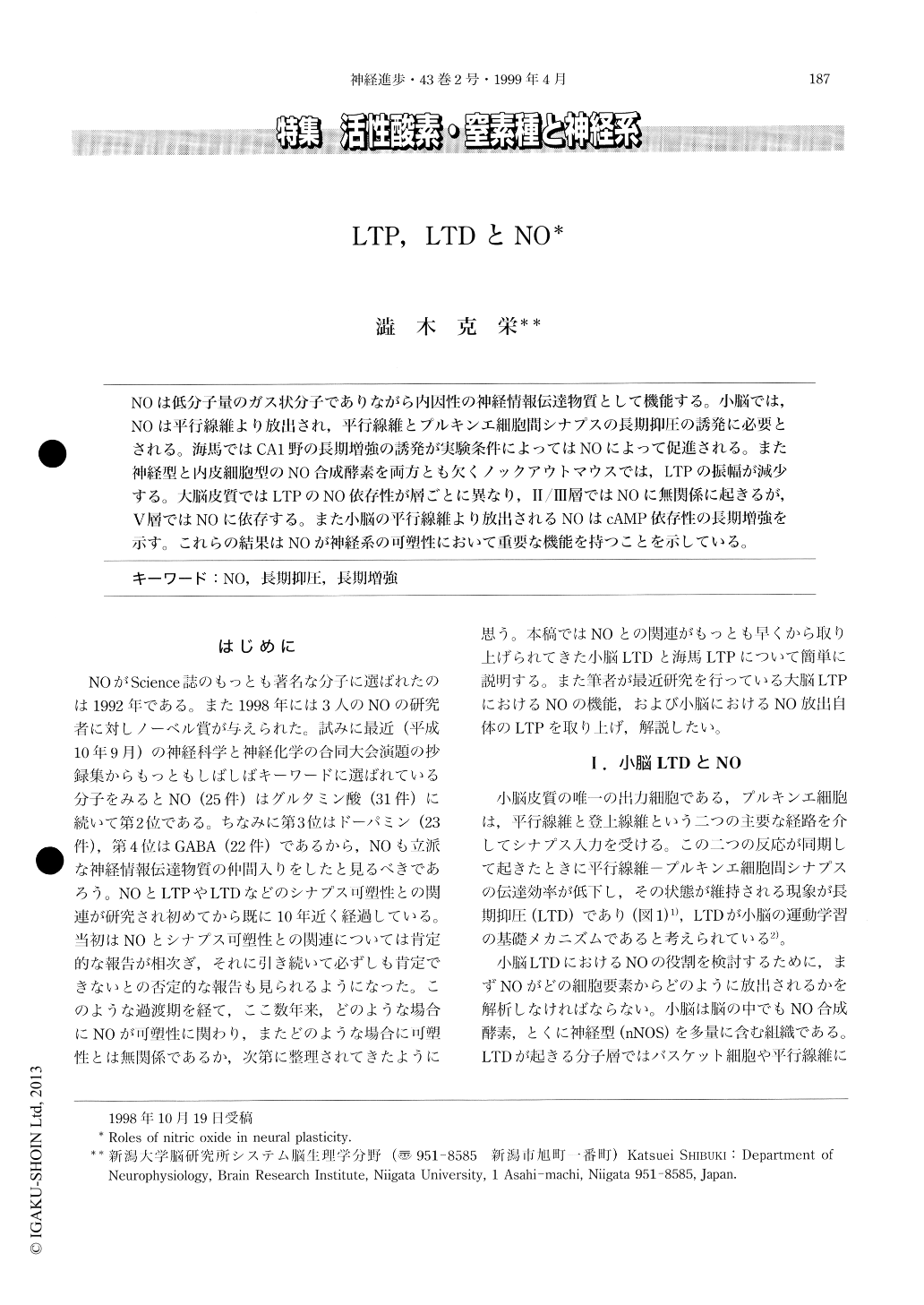Japanese
English
- 有料閲覧
- Abstract 文献概要
- 1ページ目 Look Inside
NOは低分子量のガス状分子でありながら内因性の神経情報伝達物質として機能する。小脳では,NOは平行線維より放出され,平行線維とプルキンエ細胞間シナプスの長期抑圧の誘発に必要とされる。海馬ではCA1野の長期増強の誘発が実験条件によってはNOによって促進される。また神経型と内皮細胞型のNO合成酵素を両方とも欠くノックアウトマウスでは,LTPの振幅が減少する。大脳皮質ではLTPのNO依存性が層ごとに異なり,II/III層ではNOに無関係に起きるが,V層ではNOに依存する。また小脳の平行線維より放出されるNOはcAMP依存性の長期増強を示す。これらの結果はNOが神経系の可塑性において重要な機能を持つことを示している。
Nitric oxide (NO) is a neural messenger that stimulates cGMP formation and is involved in neural plasticity. The nature of NO as a gas of low molecular weight enables inter-cellular communication since NO can penetrate cell membrane freely by diffusion. In the cerebellum, simultaneous activation of parallel and climbing fibers evokes long-term depression (LTD) of the parallel fiber/Purkinje cell synapses. NO is released from parallel fibers, and is required for the induction of cerebellar LTD.In the hippocampus, NO facilitates the induction of long-term potentiation, the magnitude of which is reduced in the knockout mice lacking neural and endothelial types of NO synthase. In the neocortex, LTP in layer II/III in the visual cortex does not depend on NO signaling, while LTP in layer V of the medial frontal cortex is NO-dependent. The apparent difference in the NO dependence of LTP is attributed to differences in cortical layers, since the layer-specific NO dependence of LTP is observed in the auditory cortex. In the cerebellum, LTP of glutamate release from parallel fibers is elicited by tetanicstimulation of parallel fibers, and is dependent on cAMP. NO release from parallel fibers is triggered by Ca2+ influx as glutamate release is, and cAMP-dependent LTP of NO release is elicited by tetanic stimulation of parallel fibers. These results clearly indicate the importance of NO in neural plasticity.

Copyright © 1999, Igaku-Shoin Ltd. All rights reserved.


